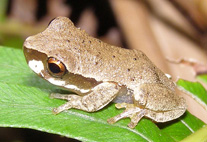Abstract
Two new species of glass sponge were discovered from the abyssal plain 200 km west of the coast of California (Station M). The sponges have similar gross morphology—an unusual plate-like form with basalia stilting the body above soft abyssal sediments. Bathydorus laniger sp. n. differs from its congeners by the presence of dermal and atrial stauractins; it is also supported by smooth hypodermal pentactins and hypoatrial hexactins. Microscleres include oxyhexasters and oxyhemihexasters. Docosaccus maculatus sp. n. contains large hexactins (>1 cm), characteristic of the genus. Megas-cleres include dermal hexactins, atrial pentactins, and choanosomal hexactins and diactins. Microscleres include oxy-tipped hemihexasters and floricomes. Several features serve to differentiate this species from its only known congener.

